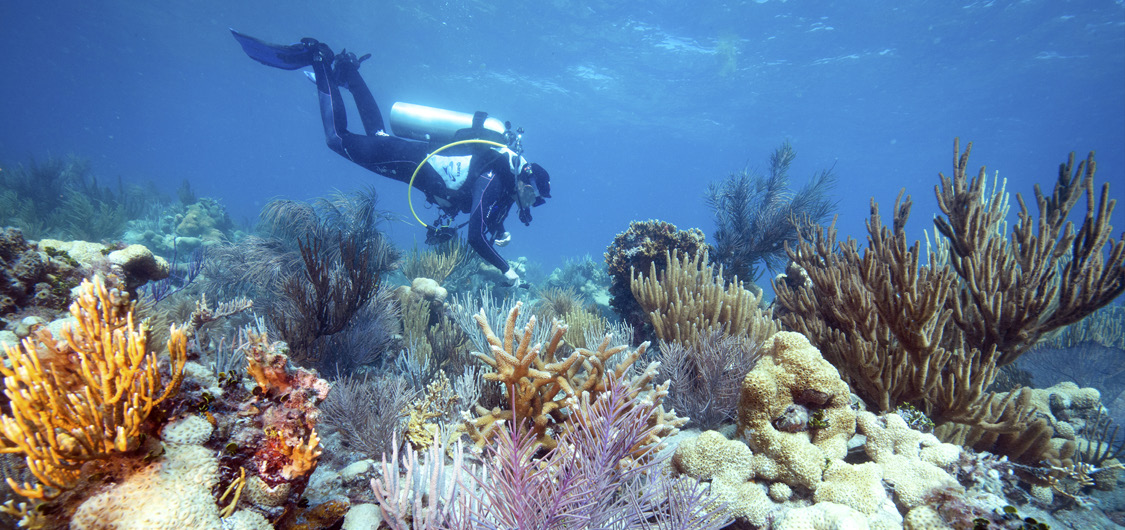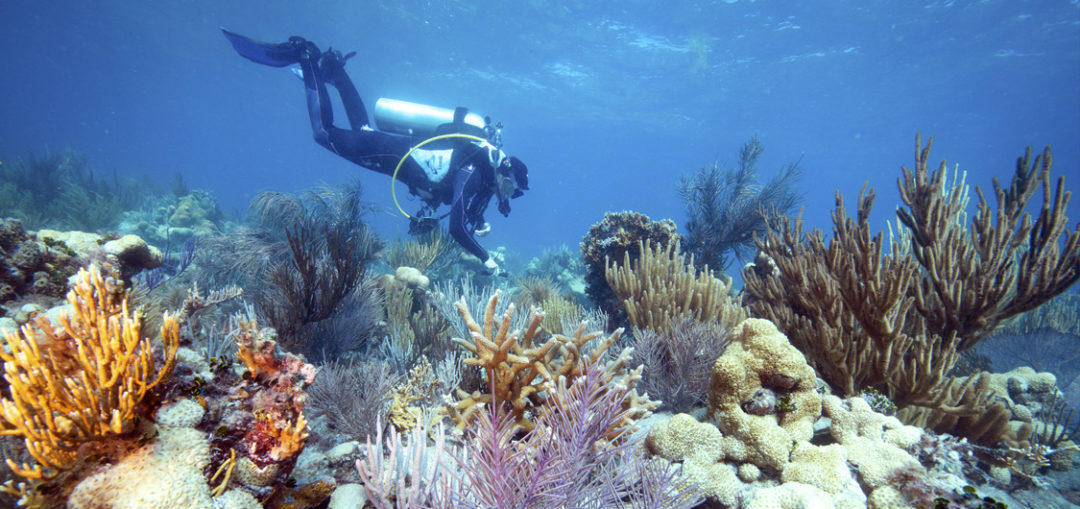Where We Work
Florida’s bank-barrier reef system supports 1,400 species of marine plants and animals, including more than 40 species of coral and 500 species offish. This chain of reefs stretches from the remote Dry Tortugas up through the areas offshore of Monroe, Miami-Dade, Broward, Palm Beach and Martin counties. These reefs are as much a part of South Florida’s cultural landscape as they area foundation of the biological and ecological seascape. From the earliest Floridians, people have derived sustenance from the sea. Florida’s coral reefs generate $6.3 billion in local sales and provide71,000 jobs annually.
Our Approach
Building on what has worked in other regions,Florida is working to develop and promoteresilience-based management strategies to enableits coral reefs to adapt to global climate changeand withstand local threats. Projects engage adiverse set of partners to improve reef health andenhance the sustainability of reef-dependentcommercial and recreational enterprises.
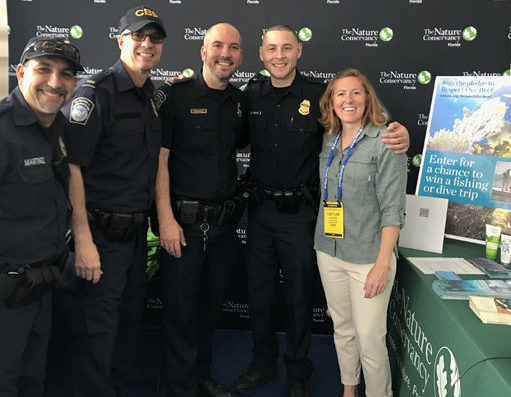
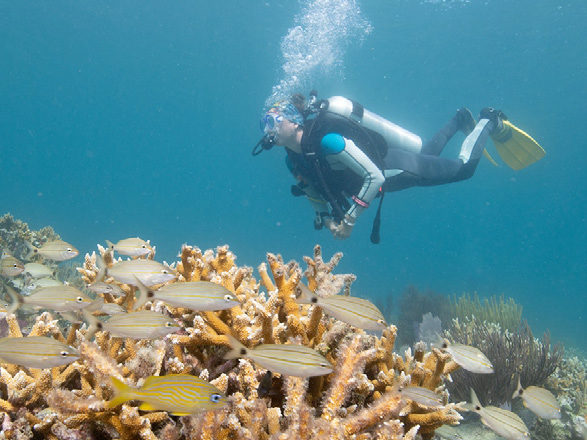
Our Accomplishments
Our work has directly benefitted 204 square miles of coral reef habitat. Partnership efforts have supported the comprehensive collection of coral reef monitoring data across the Florida Reef Tract and the training of 410 people in coral reef survey methods, resulting in 3,379 sites surveyed. This is the longest-standing cross-jurisdictional approach to informing reef management in the state.
- Developed the “Florida Reef Tract Coral Bleaching Response Plan” to provide a strategic approach for monitoring bleaching and other events, as well as protocols for early warning, impact assessment, communications and management actions.
- Coordinated up to 14 survey teams of scientific divers to conduct up to 389 coral reef surveys annually to monitor and assess bleaching. In 2014, survey results showed severe bleaching from Dry Tortugas through Biscayne National Park, making it the most significant coral bleaching event since the Florida Reef Resilience Program began in 2005. In 2016, surveys showed substantially lower levels of bleaching; however, high disease prevalence and disease mortality was recorded at numerous sites, leading to adaptation of monitoring protocols for better documentation of coral disease.
- Post Hurricane Irma, survey methods were utilized to determine impacts on coral reefs, resulting in the prioritization of reefs for rescue and stabilization efforts.
- Monitoring protocol has now been modified to help in the response efforts to Stony Coral Tissue Loss Disease. Surveys help to identify where the disease is present, quantify the severity of the disease at each site, and most recently to identify signs of recovery through the addition of juvenile surveys.
- Designed and supported the successful transfer of Florida Reef Resilience Program (FRRP) Disturbance Response Monitoring (DRM) effort to the Florida Fish and Wildlife Conservation Commission’s Fish and Wildlife Research Institute (FWRI). Annual DRM surveys, previously coordinated by The Nature Conservancy, have been incorporated into the state’s monitoring program to more firmly establish linkages between the monitoring information and reef management actions.
- Provided coordination and technical support to develop, inform, and implement two public planning processes to improve the management of Florida’s coral reefs.
- Collected, and provided decision makers and stakeholders access to, reef tract-wide data to increase effective, comprehensive, science-based on-the-ground management efforts in support of Our Florida Reefs.
- Collaborated with state partners to support the analysis of resilience across the Florida reef tract. Recommendations from the summary report were shared with local partners.
- Provided coordination, technical support, and interagency communications for a spatially explicit modelling and mapping effort describing reef fish biomass at 1 ha resolution for the entire Florida reef tract. Results are available on TNC’s Ocean Wealth data portal and have been co-presented with Florida International University at public forums and one-on-one meetings with public agencies. See www.OceanWealth.org.
- Provided coordination and dissemination of the “Respect Our Reefs” communications campaign which resulted in 681,056 digital media impressions and 3,076 clicks to learn more about the campaign by users with interests in fishing and diving in Florida.
Adapting the Disturbance Response Monitoring protocol has enabled the collection of data on hurricane-related reef conditions and the ongoing coral disease outbreak; this vital data is directly informing management actions.
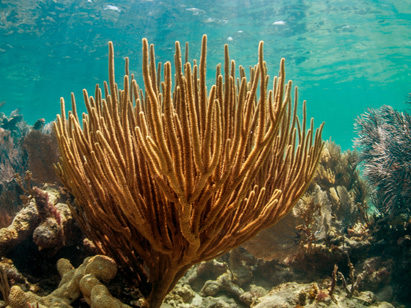
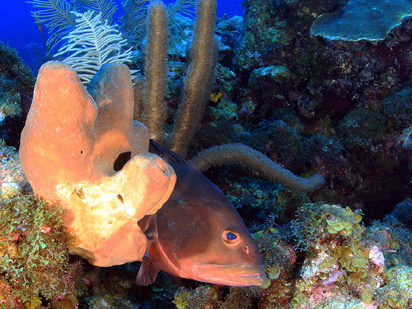
SUCCESS STORY: Modeling and Mapping Fishing Impact and the Current and Potential Biomass of Coral-Reef Fishes in South Florida
Florida’s coral reef fish species are ecologically and culturally important as well as economically valuable. Many of these fish populations suffer from fishing pressures and all are subject to habitat loss or degradation associated with multiple threats impacting reefs and other habitats.
A Need to Understand Crucial Ecosystem Relationships
As the concept and practice of ecosystem-based fishery management matures, state and federal fishery managers are becoming increasingly aware of the critical relationships between fish populations and the reefs and other habitats on which they rely.
Despite this increase in awareness, basic questions about these relationships remain. These questions include:
- How much fish biomass can a given area of coral reef produce?
- What if that area were subjected to a different amount of fishing pressure than at present?
- What if that area were in a less degraded condition?
Providing initial answers to these questions was the genesis of this project led by our partners at Florida International University.
A Two-Phase Approach
Phase 1 of the project focused on modeling and mapping fishing impact and current fish biomass, and assessing the potential benefits of conservation and management measures. For example, it identified the potential biomass increase on a reef following reduction of fishing pressure or increasing reef rugosity via active restoration.
Phase 2 allowed for further refinements including modeling subsections of the reef system (e.g., Biscayne National Park, Middle Florida Keys, Dry Tortugas Region), and individual fish species.
Results Provide Insights that Lead to Better Decision-Making
The models and resulting maps offer key insights to assessing the potential benefits and trade-offs of conservation and management investments. They also provide new information on fish biomass and fishery impacts for areas where there was little data. Armed with this vital information, managers were able to set more realistic expectations for area-based management outcomes and make better restoration management decisions.
According to John Hunt, Program Administrator for the Florida Fish and Wildlife Conservation Commission’s Fish and Wildlife Research Institute, “This model is a great step toward understanding and predicting the potential for fish populations to change as coral reef restoration expands throughout Florida. Its use will also help the restoration managers determine where added site-based management will maximize the restoration actions.”
To explore the data, visit the Coral Reef Fisheries app on www.OceanWealth.org.
